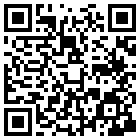
Getting Started
Welcome to making your very own Security Blanket! Taking this journey will improve your digital security each step along the way.
There are 3 major steps in this journey:
- Organize and map out all of your digital assets and credentials.
- Write out your security blanket, putting pen to paper.
- Distribute your security blanket for safe keeping.
Before you start, carve out some dedicated and uninterrupted time in a secure space for yourself. This allows you to work meticulously, free from time constraints or unwanted scrutiny. We also advise taking a moment to familiarize yourself with our security best practices.
1. Organize Your Digital Life
Begin by identifying what’s worth protecting. In the digital age, it’s common to have numerous accounts, but only a few are truly crucial. For instance, a bank account represents real-world money, making it an Essential Account (EA). An identity account, typically your primary email, like Google, is valuable as the gateway to your EAs - we refer to these as Top-Level-Accounts (TLAs). All other accounts are Regular Accounts (RAs).
For the Security Blanket, we encourage protecting your
TLAsandEAs, leaving the rest to a Password Manager.
Map It
Take the time to review all of your digital accounts now. Warning, this will probably take a few hours. Even longer if you do not use a password manager. You’ll be surprised at all of the accounts you’ve forgotten, so it’s worth the trouble to make sure you’re not leaving out anything important.
-
Write out this digital map, in a text editor of your choosing, and keep it handy for the next step. Here’s a template for the list of accounts broken down by
TLAsandEAs. Remember to consider financial, social networks, domain management, and prioritize as you go. -
For each account listed, log into the account from an incognito window and add write down all devices and authentication tools needed to access each account. Do not write out the literal passwords, but how to get the password (i.e. a password manager, or from memory). Familiarize yourself with the card notation, and card overview, to maintain a consistent writing standard for your security blanket.
-
You should now have a complete list of your
TLAs,EAs, critical devices, and tools needed to access your digital life. Hopefully, most of them have a similar access pattern (hopefully MFA), but some probably are not up to code.Now is a great time to fix and add extra layers of security to these important accounts.
If done correctly, you can even share your online digital map with your trusted contacts, without risk of compromising its security. Here’s an example map.
-
That was tedious work, but only you could do it! Count up all of the items in the map, and that’s the number of cards you’ll need for your security blanket. Make sure you have a few extra cards in case of mistakes, and you’re now ready to make your security blanket.
Outcome:
- A comprehensive
digital mapdetailingTLAs,EAs, critical devices, and access tools - A set number of cards you need per blanket.
2. Making the Security Blanket
Prerequisites
- Digital Map, from Step 1.
- Required devices to access all accounts in the map.
- Blank set of Security Blanket cards.
Write It Down
- With your digital map in hand, it’s time to start writing up your security blanket. Here’s the recommended order in filling out your cards:
- Devices
TLAs- Tools
EAs
The order reduces the amount of literal passwords and IDs you need to write down, since you can refer to previous cards with Pointers using the
@symbol (example). More information for filling out cards can be found in the card overview.Write legibly, in ink, with clear markers to distinguish similar characters: O vs. 0, Z vs. 2, 7 vs 1 vs l;
Use
@Pointers as much as possible. This both helps reduce the chance of mistakes and makes the writing process faster. -
Once you have all the cards written out, it’s time to do a test-run with a blank setup. Verify you can log into each account using only the instructions from the cards in incognito mode.
Correct any errors.
- Make copies for multiple blankets. The number should be based on the needs of your backup plan.
Outcome:
- A set of filled out Security Blankets
3. Distribute your security blanket for safe keeping.
- Decide on a set of trusted contacts, and make sure you trust them.
- Confirm with each contact that they are willing to be your security blanket. Go through the responsibilities and expectations, highlighting the importance of keeping this information safe and confidential.
- For each confirmed contact,
- Include user instructions and a customized test in their security blanket. Note that the customized test can be sent in paper or digital form. A paper form is included for your convenience.
- Meet with your contact in person, and hand them your blanket.
- (Optional) Set a date to run the test and verify the contact can operate the security blanket.
Outcome:
- Security Blankets distributed according to your backup plan and ready for use.
- Trusted contacts equipped with the security blanket in
Standby Mode, ready to assist when necessary.
Congratulations
Your security blanket is set up is complete! Make sure to read the maintenance guide to keep it up-to-date.